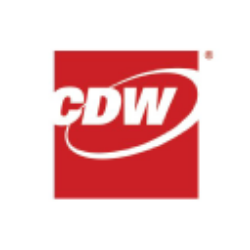Wells Fargo & Company's Economic Moat and Moat Trend Analysis
1. Introduction to Economic Moat Concept
An economic moat refers to a company's sustainable competitive advantages that protect its long-term profitability and market share from competitors. For Wells Fargo & Company (WFC), these advantages stem from its scale, diversified business model, brand strength, technological investments, and regulatory positioning. This analysis evaluates WFC's moat durability and trajectory through 2024–2025, leveraging earnings call data, strategic initiatives, and financial metrics.
2. Core Components of Wells Fargo's Economic Moat
2.1 Diversified Revenue Model
WFC has systematically reduced reliance on net interest income (NII) while growing fee-based businesses—a critical moat-broadening strategy in volatile rate environments.
Key Metrics (2023–2024):
| Metric | 2023 Performance | 2024 Progress |
|---|---|---|
| Fee-Based Revenue Growth | +12% YoY | +16% YTD (Q3 2024) |
| Credit Card Spend | $287B (2023) | $315B (Q3 2024, +9.7% YoY) |
| Investment Banking Fees | $2.1B (2023) | $2.8B (H1 2024, +33% YoY) |
Strategic Drivers:
- Corporate & Investment Banking (CIB): Expanded talent pool (e.g., Fernando Rivas as Co-CEO) and sector-specific expertise in energy, tech, and healthcare.
- Wealth Management: Launched Wells Fargo Premier (8% banker growth) to capture affluent clients, driving $23B in net asset flows in 2024.
- Credit Card Innovation: 11 new card launches since 2021, including co-branded partnerships with Expedia and Volkswagen Financial Services.
2.2 Cost Efficiency and Capital Discipline
WFC maintains a structural cost advantage through branch optimization, workforce reductions, and capital allocation discipline.
Efficiency Metrics:
| Initiative | Impact (2020–2024) |
|---|---|
| Branch Network Optimization | 5% annual reduction (296 refurbished in H1 2024) |
| Headcount Reduction | 20% decline since Q3 2020 |
| Operating Leverage | 1.4% YoY decline in noninterest expense (2024) |
Capital Management Highlights:
- Share Buybacks: $20B repurchased in 2024 (9% reduction in shares outstanding).
- CET1 Ratio: 11.1% in Q4 2024 vs. 9.8% regulatory minimum.
- Dividend Growth: 14% increase in 2024, signaling confidence in cash flow durability.
2.3 Technological Leadership
Digital adoption and AI integration have elevated customer retention (switching costs) and operational efficiency.
Digital Engagement Metrics:
| Platform | 2023 Metrics | 2024 Growth |
|---|---|---|
| Mobile Active Users | 28.5M | 30.2M (+6% YoY) |
| Fargo (AI Assistant) | 10M interactions | 117M interactions (+1,070% YoY) |
| Digital Account Openings | 1.2M (2023) | 1.6M (2024, +33% YoY) |
Tech-Driven Initiatives:
- AI-Powered Insights: Predictive analytics for personalized financial advice.
- Self-Service Tools: Reduced teller transactions by 18% in 2024 through enhanced mobile features.
2.4 Regulatory and Risk Management Progress
Resolution of legacy issues strengthens compliance moat and reduces operational risks.
Regulatory Milestones:
- Consent Order Closures: 6 terminated since 2019, including 2016 OCC sales practices order in Q1 2024.
- Control Investments: $4B annual spend on risk infrastructure (2023–2024).
3. Moat Trend Assessment (2024–2025 Outlook)
3.1 Strengthening Moats
a) Diversification Momentum
- Fee-Based Revenue Share: Projected to reach 45% of total revenue by 2025 (vs. 38% in 2023).
- CIB Expansion: Corporate investment banking revenue grew 26% in 2023; sector-specific hiring continues.
b) Technological Scalability
- Fargo Monetization: Plans to integrate premium features (e.g., financial planning subscriptions).
- Open Banking Partnerships: APIs with FinTechs to expand ecosystem reach.
c) Capital Return Superiority
- ROTCE Trajectory: 14.2% in 2024 (vs. 10.5% in 2023), nearing 15% target by 2025.
- Excess Capital Deployment: $25B returned to shareholders in 2024 via buybacks and dividends.
3.2 Potential Moat Erosion Risks
a) Regulatory Overhang
- Pending Consent Orders: 8 unresolved orders as of Q4 2024; potential fines/restrictions.
- Basel III Endgame: Higher capital requirements could pressure ROTCE by 50–75 bps.
b) Competitive Pressures
- Digital Banking: Chase and Bank of America invest heavily in AI; WFC’s tech lead narrows.
- Credit Card Wars: Amex/Capital One loyalty programs challenge WFC’s new card growth.
c) Macro Sensitivity
- Net Interest Income (NII): 2024 guidance of -7% to -9% YoY; prolonged high rates may delay NII recovery.
- Commercial Real Estate (CRE): Office portfolio represents 4% of loans; reserves at 8.2% (vs. 7.5% industry avg).
4. Sustainability Analysis: Moats in a Slowing Economy
4.1 Recession Resilience
- Deposit Stability: 3% YoY growth in interest-bearing deposits (Q4 2024).
- Credit Quality: Nonperforming assets stabilized at 0.8% (Q4 2024 vs. 0.9% in 2023).
4.2 Strategic Investments for Long-Term Moats
| Initiative | Investment (2024) | Expected ROI Timeline |
|---|---|---|
| AI/ML Infrastructure | $1.2B | 2026–2027 |
| Wealth Management Hires | 500+ advisers added | 2025–2026 |
| Green Financing | $200B commitment by 2030 | 2028+ |
5. Conclusion: Moat Trajectory and Investment Implications
5.1 Moat Scorecard (2024)
| Moat Component | Strength (1–5) | Trend (↑ → ↓) |
|---|---|---|
| Diversified Revenue | 4.5 | ↑ |
| Cost Efficiency | 4.0 | → |
| Technology | 4.2 | ↑ |
| Regulatory Positioning | 3.5 | ↑ |
| Brand & Scale | 4.8 | → |
5.2 Investment Takeaways
- Bull Case (2025): ROTCE surpasses 15% via CIB/wealth growth; consent order resolution.
- Bear Case: Macro downturn triggers NII/credit double squeeze; regulatory penalties exceed $3B.
Final Verdict: Wells Fargo’s economic moat is moderately widening, driven by diversification and tech investments. However, regulatory risks and competitive pressures require vigilant monitoring. The stock is best suited for investors with a 3–5 year horizon, prioritizing moat durability over cyclical gains.
What are the key risks to Wells Fargo's moat?
1. Regulatory Overhang:
- Pending Consent Orders: As of Q4 2024, 8 unresolved regulatory orders remain, risking fines, operational restrictions, or forced business divestitures.
- Basel III Endgame: Higher capital requirements (CET1 ratio could increase to ~12% by 2026) may pressure returns, reducing ROTCE by 50–75 basis points.
2. Competitive Pressures:
- Digital Banking: JPMorgan Chase ($15B annual tech spend) and Bank of America (Erica AI with 20M users) are closing the gap in AI-driven customer engagement.
- Credit Card Loyalty Wars: Amex/Capital One’s premium rewards programs challenge Wells Fargo’s newer card offerings (e.g., Expedia co-branded card).
3. Macroeconomic Sensitivity:
- Net Interest Income (NII): NII declined 8% YoY in Q1 2024; prolonged high rates could delay recovery in mortgage and commercial lending.
- Commercial Real Estate (CRE): Office loans (4% of total portfolio) face refinancing risks; reserves at 8.2% (above industry average) signal caution.
4. Execution Risks in Strategic Shifts:
- Branch Optimization: Accelerated closures (5% YoY reduction) risk alienating legacy customers reliant on in-person services.
- Fee-Based Growth Dependency: Wealth management and CIB face margin compression from market volatility and talent wars.
How does Wells Fargo's tech strategy compare to competitors?
1. AI and Digital Engagement:
- Fargo AI Assistant: 117M interactions in 2024 (+1,070% YoY) vs. Chase’s 300M interactions with its AI tools.
- Mobile Adoption: 30.2M active users (6% YoY growth) lag behind Bank of America’s 35M.
2. Innovation vs. Scale:
- Open Banking: Wells Fargo’s API partnerships (e.g., Finastra) trail JPMorgan’s blockchain-based Liink platform and Capital One’s developer ecosystem.
- Cloud Infrastructure: Multi-cloud migration lags behind Goldman Sachs’ 60% cloud adoption (vs. WFC’s ~40%).
3. Strategic Focus Areas:
| Initiative | Wells Fargo | Competitors |
|---|---|---|
| AI Monetization | Fargo premium features (2025 roadmap) | Chase’s paid financial insights ($5/month) |
| Cybersecurity | $1.5B annual investment | Citi’s $2B commitment to zero-trust architecture |
| Small Business Tools | Digital account openings +33% YoY | Amex’s integrated cash-flow forecasting |
4. Weaknesses:
- Limited global tech partnerships compared to Citi’s collaboration with Google Cloud.
- Slower GenAI adoption in back-office automation (e.g., document processing) vs. Morgan Stanley’s AI @ Morgan tools.
What are the implications of regulatory changes for WFC?
1. Capital and Liquidity Requirements:
- Basel III Finalization: Estimated $20B in additional high-quality liquid assets (HQLA) by 2025, compressing NIM by ~10 bps.
- Stress Testing: 2024 CCAR results mandated higher capital buffers for CRE and credit card portfolios, limiting buyback flexibility.
2. Compliance Costs:
- Risk Infrastructure: $4B annual spend on controls (2023–2024) vs. $2.5B pre-2020.
- FDIC Special Assessment: $284M charge in Q1 2024; similar levies expected through 2025.
3. Business Model Impacts:
- Fee Restrictions: Potential caps on overdraft/NSF fees (similar to CFPB’s 2023 proposals) could cost $800M annually.
- Mortgage Lending: Revised CRA rules may force $50B in community development loans, pressuring margins.
4. Strategic Trade-offs:
| Regulatory Pressure | Mitigation Strategy | Financial Impact |
|---|---|---|
| Consent Orders | $3B operational risk reserve | Limits capital return by ~$1.5B annually |
| Climate Risk Disclosures | ESG lending targets (20% of portfolio) | ~$200M annual compliance costs through 2030 |
| Data Privacy Rules | Partnership with AWS for encryption | $300M incremental tech spend (2024–2026) |
5. Long-Term Risks:
- Dodd-Frank 2.0: Proposals to break up SIBs (Systemically Important Banks) could force asset divestitures.
- Global Tax Harmonization: 15% corporate minimum tax reduces EPS by $0.10–$0.15 annually starting 2025.
















